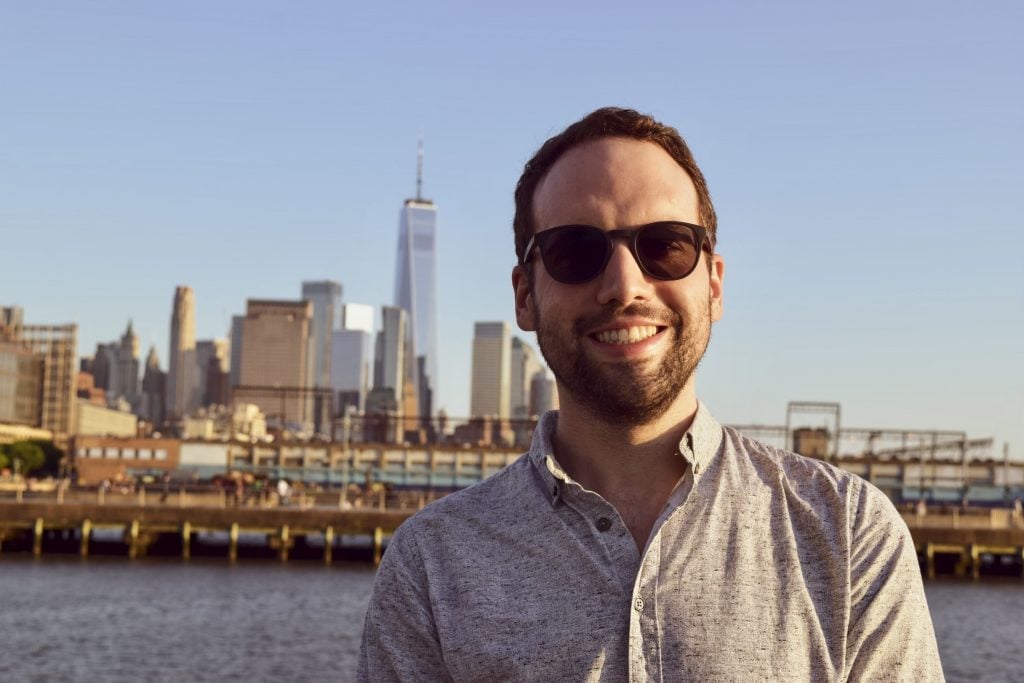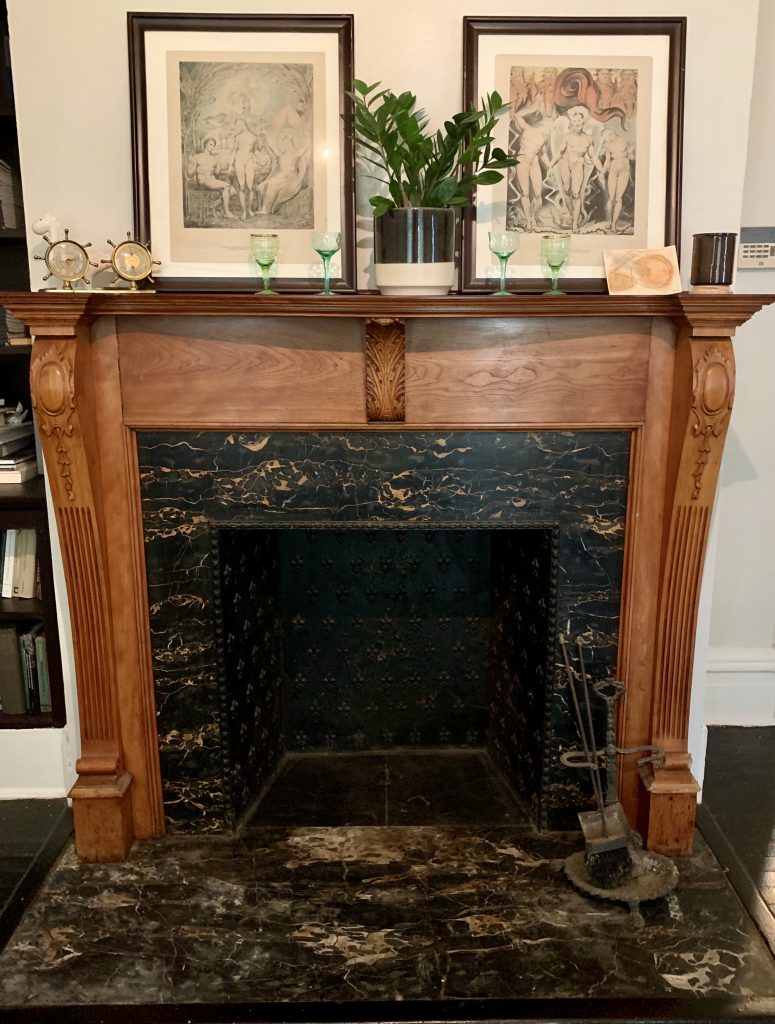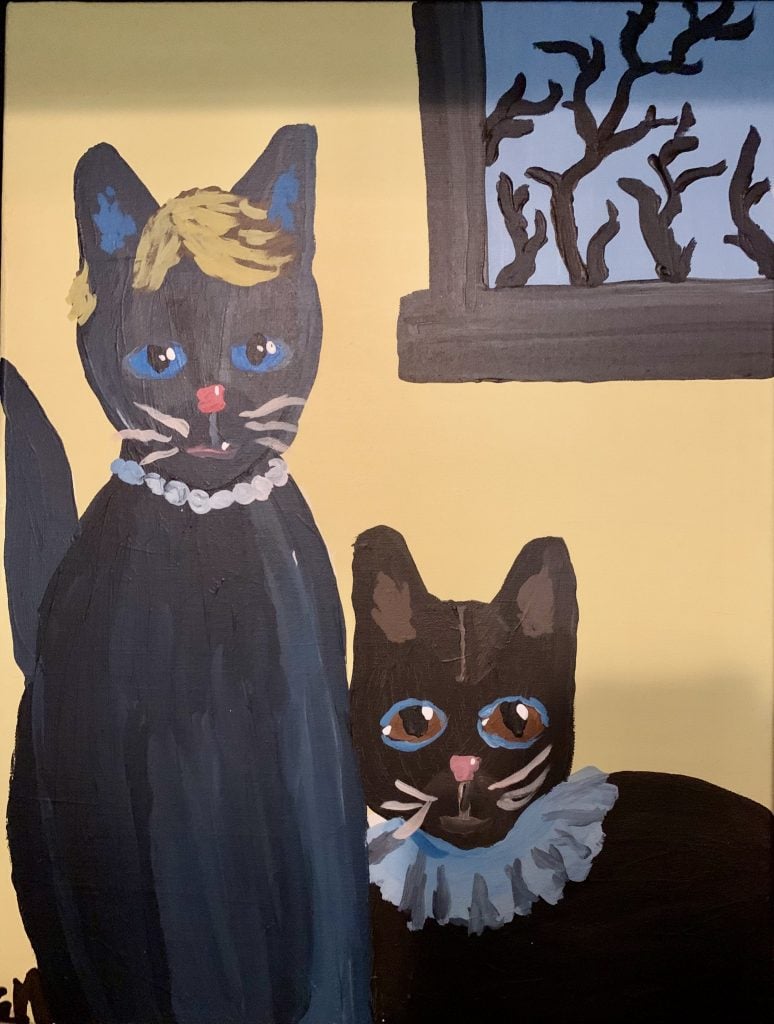People
The Art World at Home: Smithsonian Institution Oral Historian Ben Gillespie Is Listening to Bach and Watching ‘Star Trek’
We caught up with Gillespie to hear about what he's reading these days and how he de-stresses.

We caught up with Gillespie to hear about what he's reading these days and how he de-stresses.

by
Artnet News

Ben Gillespie has a unique job you may not even know exists: he an oral historian (formally, the Arlene and Robert Kogod Secretarial Scholar for Oral History) at the Archives of American Art at the Smithsonian Institution.
For much of the past year, he has focused on the organization’s Pandemic Oral History Project, for which he and a group of scholars have interviewed more than 80 artists, curators, and culture workers such as Billy Al Bengston and Cory Arcangel to get “a firsthand account of and urgent insights into the triumphs and tragedies in the summer of 2020,” according to the Smithsonian.
We caught up with Gillespie to learn about the project, what he’s reading these days, and how he de-stresses.
What are you working on now?
We’re still adapting the oral history program to the long-term lessons from the ongoing pandemic. I’ve been coordinating for in-person post-vaccination sessions as well as developing remote kits to improve the quality of remote interviews going forward as we maintain momentum from the Pandemic Oral History Project.
We’re excited by the possibilities for a hybrid model in the future, using remote or in-person as needed. It has also been a thrill to dive into our oral history collections for an upcoming Archives podcast series. We’ll be announcing more about it very soon.
When I’m not at my desk, I’ve been trying to tango between my long backlog of “should” books and contemporary novels. Most recently I read Theresa Hak Kyung Cha’s Dictee, a stunning odyssey across language and grief, and Torrey Peters’s Detransition, Baby, which brilliantly smirks through a few gender-related panics and realities in the U.S. today.
It’s Friday night and your favorite restaurant is packed. What’s your backup plan?
I’ll be cooking breakfast for dinner—it always feels like a special treat to poach some eggs and fry up pancakes, and Friday night is a crucial transition out of the busy week.
While I make dinner I’ll need a soundtrack. At the moment that would be Augustin Hadelich’s fantastic new recording of the Bach Sonatas and Partitas for solo violin, or the long overdue reissue of Nicki Minaj’s scorching mixtape, Beam Me Up, Scotty.
To complete the evening, I’ll plant myself on the couch with rosé and an old sitcom; I’ve been working my way through The Nanny this spring.
It’s Sunday and your calendar is completely clear. How do you spend your morning?
I’m walking to get a doughnut and cold brew before dipping back into a historical mystery, my absolute favorite escapism. The “Amelia Peabody” series by Elizabeth Peters (pen name for Barbara Mertz), the “Mary Russell” series by Laurie R. King, and the “Maisie Dobbs” series by Jacqueline Winspear continue to comfort and thrill me.
You’re on a desert island and you can only stream one TV series. What do you choose?
Is this a bad time to confess that I only like to watch shows once for the most part? On this luxury desert island with only one TV stream, I might be tempted to opt for House Hunters and its 120+ seasons, but more realistically I’d probably go with Star Trek: Deep Space Nine, which is an incredible saga full of pathos, hope for humanity’s future, and sharp wit to keep me going.

The 1896 fireplace in Ben Gillespie’s home, which is original to the architecture. Photo courtesy Ben Gillespie.
What is your favorite part of your house and why?
This 1896 fireplace, original to the home, was beautifully restored and serves as both my meeting background and counterpart to my reading nook. Each detail is stunning, though I’m partial to the fleur de lys ironwork.
Atop the mantle I’ve set gifts from loved ones and creature comforts as constant reminders of life’s fullness during work calls and book breaks.
What three things is your kitchen always stocked with?
Coffee beans from Sweet Bloom, my favorite hometown roasters in Colorado; Magic Salt from Curio, my preferred pinch of savory heat; and licorice and peppermint tea from Teapigs, an herbal yet decadent after-dinner elixir.
What’s the best advice you’ve ever received? And the worst?
The best advice I’ve received is to meet each moment on its own terms, a phrase whose meaning has evolved. I usually need to learn things the hard way, and the gentle reminder that time only spins forward has helped me focus on adjusting to new conditions without prejudging them based on the past. Experience should inform rather than dictate.
Any advice that relies on pure will power or rigid repetition is usually a bad match for me, as I get caught up in adhering to the structure rather than finding the best solution on my own terms. My creativity needs a few undefined variables to really spark.
What’s the best change in habit you’ve acquired over the past year? What’s the worst?
I’ve gotten much better at sharing my rough draft ideas without shame. In the past, I would languish over polishing an idea before seeking feedback, but Zoom and my desire for human contact have conspired to get me babbling about new ideas early on, which in turn has led to amazing collaborative brainstorms.
I wish I had an interesting new worst habit, but it’s just excessive screen time, and I wince every time I think about it before researching remedies, oops.

Emma Martin’s painting of Sylvia Plath and Emily Dickinson as cats. Photo courtesy Ben Gillespie.
What’s your favorite work of art in the house and why? (Please send a picture)
At the outset of graduate school, my dear friend Emma Martin (@emmpaintings) painted Sylvia Plath and Emily Dickinson as cats in a yellow-wallpapered attic overlooking a yew tree for me. The symbolism is heavy-handed, as is the love, and I am constantly delighted by the sight in my bedroom.
The art world can be all-consuming. How do you create boundaries for yourself?
Boundaries have been especially difficult because of how much we all love the work, and I often feel so energized and engaged by everything we do at the Archives.
That said, this past year has taught me the need to shift gears and give myself more rest than I anticipate (or even think I deserve at times). As a serial compartmentalizer, I find physical space to be the best marker for me, and I am so lucky to have a distinct home office area. As soon as I step away from the desk, work time is over. I have visual cues nearby as well, such as leaving my current pleasure books just out of reach.
As far as email boundaries, I haven’t figured them out yet; my best effort has been an automatic do-not-disturb schedule on my phone.